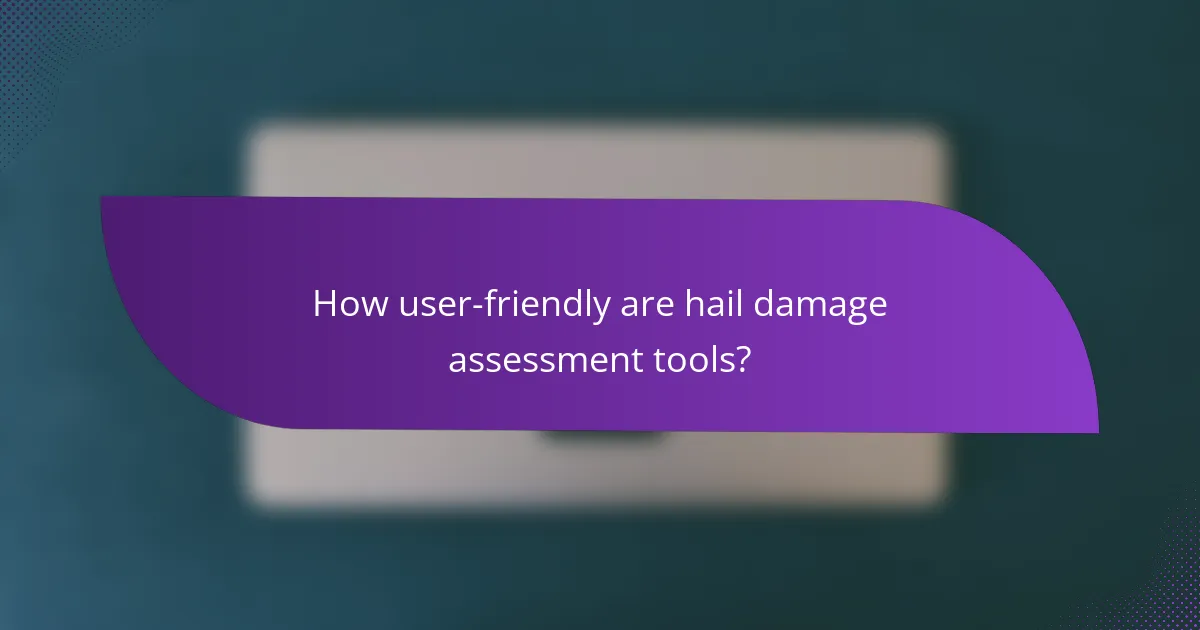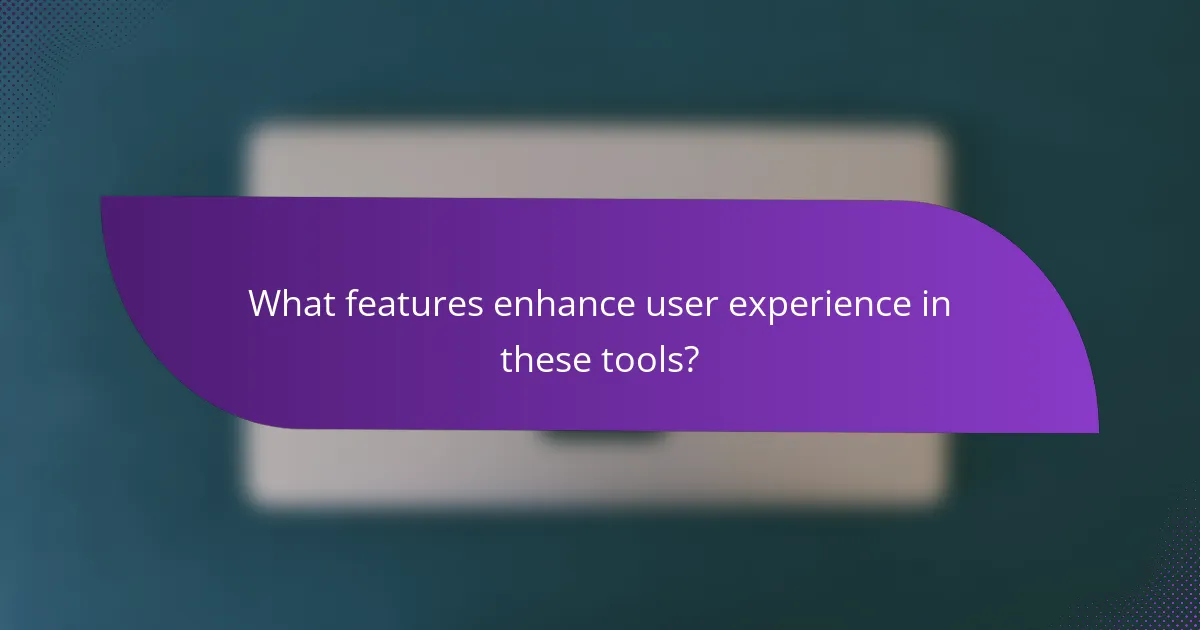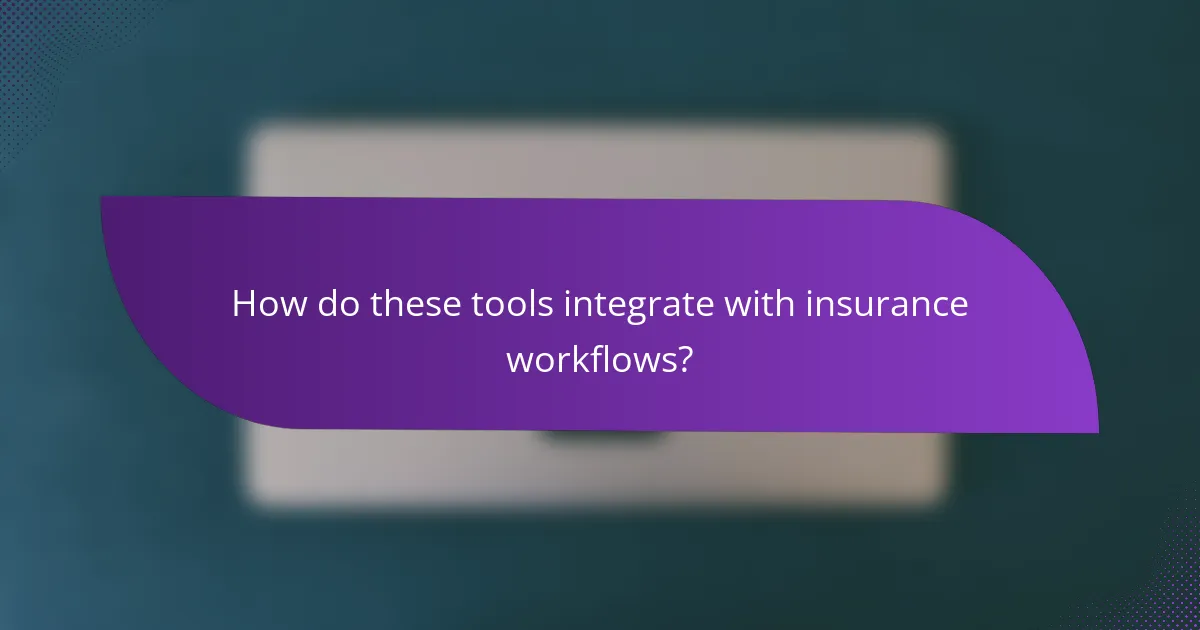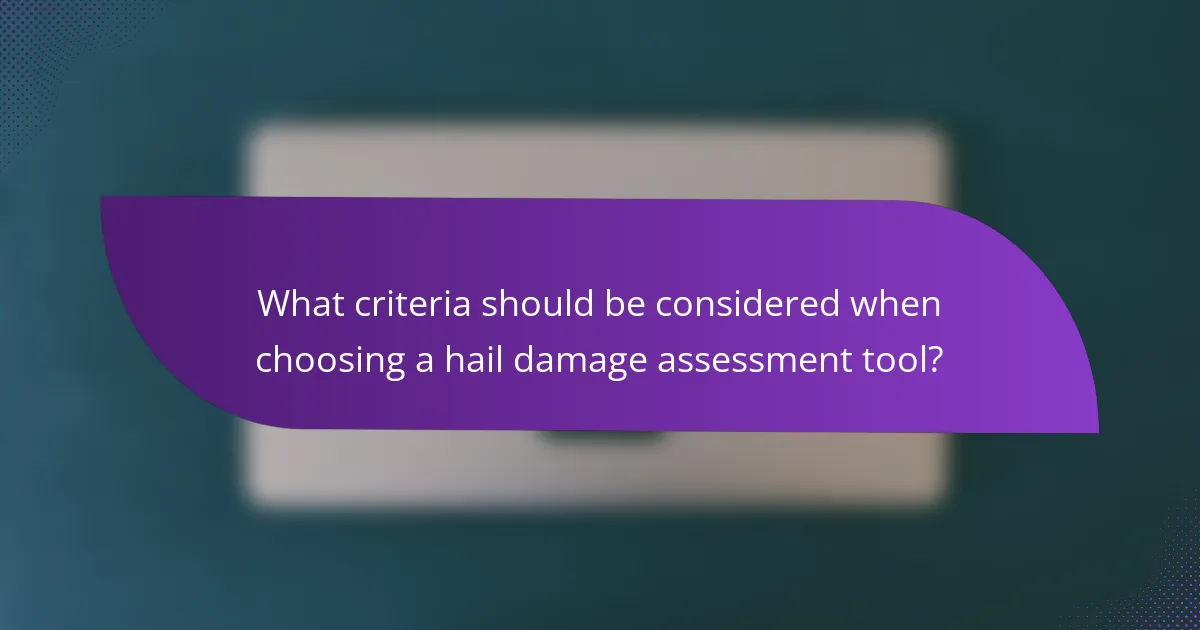Hail damage assessment tools play a crucial role in evaluating the impact of severe weather events, particularly for insurance adjusters and property owners. With options like HailTrace, StormGeo, and AccuWeather, these tools offer advanced data analytics and user-friendly interfaces that enhance the assessment experience. Key features such as real-time data updates and interactive maps contribute to their effectiveness, ensuring users can make informed decisions quickly and efficiently.

What are the best hail damage assessment tools in Ireland?
The best hail damage assessment tools in Ireland include HailTrace, StormGeo, and AccuWeather. These tools provide valuable insights for assessing hail damage through advanced data analytics and user-friendly interfaces, making them essential for insurance adjusters and property owners alike.
HailTrace
HailTrace is a specialized tool designed for tracking hail storms and assessing damage. It utilizes real-time data to provide detailed maps of hail events, helping users identify affected areas quickly. This tool is particularly useful for insurance professionals who need to evaluate claims efficiently.
One of HailTrace’s key features is its ability to generate historical hail reports, which can assist in understanding the severity and frequency of hail in specific regions. Users can easily access this data through an intuitive dashboard, making it straightforward to navigate.
StormGeo
StormGeo offers comprehensive weather solutions, including hail damage assessments. Its platform combines meteorological data with predictive analytics to forecast hail events and their potential impact. This proactive approach allows users to prepare for storms and mitigate damage effectively.
With StormGeo, users can access detailed weather alerts and customized reports tailored to their specific needs. The tool’s user-friendly interface ensures that even those with limited technical expertise can utilize its features effectively.
AccuWeather
AccuWeather is widely recognized for its accurate weather forecasting and includes features for assessing hail damage. The platform provides localized weather updates and alerts, helping users stay informed about impending hail storms. Its mobile app allows for on-the-go access to critical information.
In addition to real-time updates, AccuWeather offers a range of tools for analyzing past weather events, which can be beneficial for assessing damage claims. Users should take advantage of its detailed radar maps to visualize storm paths and hail intensity.

How user-friendly are hail damage assessment tools?
Hail damage assessment tools vary in user-friendliness, with many designed to simplify the evaluation process for users. Key factors include intuitive interfaces, mobile accessibility, and robust customer support, all of which enhance the overall experience and effectiveness of these tools.
Intuitive interfaces
Intuitive interfaces are crucial for hail damage assessment tools, allowing users to navigate easily without extensive training. Tools that employ clear layouts, straightforward menus, and visual aids can significantly reduce the time needed to assess damage.
For example, a tool that uses drag-and-drop features for uploading images or reports can streamline the process. Look for software that offers guided workflows to help users complete assessments efficiently.
Mobile accessibility
Mobile accessibility is essential for hail damage assessment, enabling users to conduct evaluations on-site. Tools that are optimized for smartphones and tablets allow for real-time data entry and immediate reporting, which is vital during severe weather events.
Consider tools that offer offline capabilities, ensuring assessments can continue even in areas with poor connectivity. This flexibility can enhance productivity and accuracy in damage reporting.
Customer support options
Robust customer support options are a key aspect of user-friendly hail damage assessment tools. Effective support can include live chat, phone assistance, and comprehensive online resources such as FAQs and tutorials.
When choosing a tool, evaluate the availability of support during critical times, such as after a hailstorm. A responsive support team can help users troubleshoot issues quickly, ensuring assessments are completed without delays.

What features enhance user experience in these tools?
User experience in hail damage assessment tools is significantly improved by features such as real-time data updates, interactive maps, and custom reporting capabilities. These functionalities not only streamline the assessment process but also provide users with accurate and actionable insights.
Real-time data updates
Real-time data updates ensure that users receive the latest information regarding hail events, which is crucial for timely assessments. This feature allows users to track storm developments and damage reports as they happen, minimizing the risk of outdated information affecting decision-making.
For example, tools that integrate with weather services can provide alerts on hail size and location, helping users prioritize areas for inspection. Ensuring that your tool offers timely updates can enhance responsiveness and improve overall assessment accuracy.
Interactive maps
Interactive maps are essential for visualizing hail damage across different regions. These maps allow users to zoom in on affected areas, view historical data, and analyze patterns over time, which aids in understanding the extent of damage.
When using interactive maps, consider features like layering options that display various data sets, such as population density or property values. This can help users assess the potential impact of hail damage on specific communities and prioritize their response efforts accordingly.
Custom reporting capabilities
Custom reporting capabilities enable users to generate tailored reports based on specific criteria, such as damage severity or geographic area. This feature is particularly useful for insurance adjusters and contractors who need to present findings to clients or stakeholders.
When selecting a tool, look for options that allow you to easily customize report formats, include visual data representations, and export to various file types. This flexibility can save time and improve communication with clients, ensuring that all parties are on the same page regarding damage assessments.

How do these tools integrate with insurance workflows?
Hail damage assessment tools streamline insurance workflows by automating processes and enhancing communication between stakeholders. These tools facilitate quicker claims processing, improve data sharing with adjusters, and seamlessly integrate with customer relationship management (CRM) systems.
Claims processing automation
Claims processing automation significantly reduces the time required to handle hail damage claims. By utilizing advanced algorithms and machine learning, these tools can quickly analyze damage reports and generate initial estimates, often within a few minutes. This efficiency allows insurers to respond to customers faster, improving satisfaction and retention.
For example, a typical automated claims process might involve uploading photos of the damage, which the tool then assesses against historical data to provide an estimated repair cost. This can save adjusters hours of manual work, allowing them to focus on more complex cases.
Data sharing with adjusters
Effective data sharing with adjusters is crucial for accurate claims evaluation. Hail damage assessment tools enable real-time access to damage reports, photographs, and estimates, ensuring that adjusters have all necessary information at their fingertips. This transparency helps reduce discrepancies and speeds up the decision-making process.
Tools often include features that allow adjusters to leave comments or request additional information directly within the platform. This collaborative approach minimizes back-and-forth communication and helps maintain a clear audit trail of all interactions related to the claim.
Integration with CRM systems
Integrating hail damage assessment tools with CRM systems enhances customer management and follow-up processes. This integration allows insurers to track customer interactions, claims history, and policy details in one centralized location, improving overall efficiency. It also helps in personalizing customer communications based on their specific claims and needs.
For instance, when a claim is filed, the CRM can automatically update the customer’s profile with relevant information, enabling agents to provide tailored support. This streamlined approach not only saves time but also fosters stronger relationships with clients, ultimately leading to higher retention rates.

What are the pricing models for hail damage assessment tools?
Hail damage assessment tools typically employ various pricing models, including subscription-based plans, pay-per-use options, and free trials. Understanding these models can help users select the most cost-effective solution for their needs.
Subscription-based pricing
Subscription-based pricing is a common model where users pay a recurring fee, often monthly or annually, to access the hail damage assessment tool. This model usually provides unlimited access to features and updates, making it suitable for businesses that require regular assessments.
Prices can vary widely, typically ranging from low tens to several hundreds of USD per month, depending on the tool’s capabilities and the number of users. Users should consider their frequency of use and the size of their operations when evaluating this option.
Pay-per-use options
Pay-per-use options allow users to pay only for the assessments they conduct, making it a flexible choice for those who may not need regular access. This model is particularly beneficial for smaller businesses or individuals who assess hail damage infrequently.
Costs can vary based on the complexity of the assessment, with fees often ranging from a few dollars to over a hundred dollars per assessment. Users should weigh the potential savings against the frequency of their assessments to determine if this model is right for them.
Free trial availability
Many hail damage assessment tools offer free trials, allowing users to test the software before committing to a purchase. These trials typically last from a few days to a month and provide access to most features, enabling users to evaluate usability and effectiveness.
Taking advantage of free trials can help users make informed decisions without financial risk. It’s advisable to utilize the trial period fully, exploring all features to ensure the tool meets specific needs before subscribing or paying per use.

What are real-life case studies demonstrating user-friendliness?
Real-life case studies highlight how hail damage assessment tools can be user-friendly, enhancing efficiency and accuracy for users. These examples illustrate practical applications and the positive impact on decision-making in the field.
Case study: HailTrace user experience
HailTrace has gained recognition for its intuitive interface, allowing users to quickly access hail event data. Users report that the platform’s visualizations make it easy to interpret complex information, which is crucial for timely assessments.
For instance, a roofing contractor utilized HailTrace to assess damage after a storm. The contractor was able to generate detailed reports in under 30 minutes, significantly speeding up the claims process. This efficiency not only improved customer satisfaction but also increased the contractor’s business opportunities.
Case study: StormGeo implementation
StormGeo’s hail damage assessment tools are designed for seamless integration into existing workflows. Users appreciate the ability to customize alerts and reports, tailoring the system to their specific needs, which enhances usability.
A local insurance company adopted StormGeo to streamline its claims processing. By leveraging the platform’s real-time data and user-friendly dashboard, the company reduced its claim handling time by approximately 20%. This improvement led to faster payouts and a better experience for policyholders.

What criteria should be considered when choosing a hail damage assessment tool?
When selecting a hail damage assessment tool, consider user-friendliness, accuracy, and the specific features that meet your needs. Tools should facilitate quick evaluations and provide reliable data to support claims for insurance or repair purposes.
User-Friendliness
User-friendliness is crucial for effective hail damage assessment tools. Look for interfaces that are intuitive and easy to navigate, allowing users to quickly input data and generate reports. Tools with mobile compatibility can enhance accessibility, enabling assessments to be conducted on-site.
Consider tools that offer tutorials or customer support to assist users in maximizing their functionality. A user-friendly tool can significantly reduce the learning curve, making it easier for both professionals and homeowners to assess damage accurately.
Accuracy of Assessments
Accuracy is vital when evaluating hail damage, as it directly impacts insurance claims and repair decisions. Choose tools that utilize reliable data sources, such as satellite imagery or weather reports, to provide precise assessments. Look for features that allow for cross-verification of data to enhance reliability.
Tools that incorporate machine learning or artificial intelligence can improve accuracy by analyzing historical data patterns. Ensuring that the tool adheres to industry standards can also help maintain a high level of precision in assessments.
Features and Functionality
Features such as damage mapping, cost estimation, and reporting capabilities can significantly enhance the utility of hail damage assessment tools. Evaluate whether the tool offers customizable options to suit specific needs, such as different types of property or varying levels of damage.
Additionally, consider tools that integrate with other software, such as insurance claim management systems. This integration can streamline the process from assessment to claim submission, saving time and reducing errors.
Cost Considerations
Cost is an important factor when selecting a hail damage assessment tool. Prices can vary widely, from free basic options to premium subscriptions with advanced features. Assess your budget and determine which features are essential for your needs to avoid overspending on unnecessary capabilities.
Some tools may offer a pay-per-use model, which can be beneficial for occasional users. Always weigh the cost against the potential benefits, such as faster claims processing or more accurate assessments, to ensure you make a sound investment.
